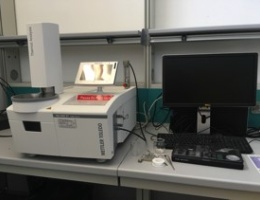Energy from microalgae: new experimental results
Microalgae, nowadays generally marketed as nutritional supplements, have a wide potential as an energy source thanks to the fast growth and to the possibility to be cultivated in water
Date:
04 December 2020
Microalgae, nowadays generally marketed as nutritional supplements, have a wide potential as an energy source thanks to the fast growth and to the possibility to be cultivated in water (including wastewater) avoiding the use of arable land. Considering the goal of the European Union to become carbon neutral by 2050, the use of microalgae as an energy source can represent one of the most promising approaches.
The use of microalgae as fuel in combustion, pyrolysis, and gasification processes for power generation and biofuel production still requires a significant technology development that needs to start from a deep knowledge of thermochemical conversion processes and reaction mechanisms. And the key pathway for this kind of characterization is represented by the thermogravimetric analysis. Thanks to the use of sophisticated instruments, it allows studying the kinetic behaviour of fuels with very low experimental costs.
A detailed study of these phenomena has been recently conducted by Sotacarbo in collaboration with Heriot-Watt University (Edinburgh, United Kingdom) and Imdea Energy (Madrid, Spain). And the very promising results have been just published by the prestigious international journal “Energy”, edited by Elsevier.
[caption id="attachment_14127" align="alignleft" width="281"] Microalgae's analytical equipment[/caption]
“We have studied two specific microalgae, Nannochloropsis and Tetraselmis since they are particularly promising for the application in the energy field. A wide experimental campaign has been conducted to assess the feasibility of different conversion technologies”, Federica Dessì (Sotacarbo researcher and first author of the study) says. “The most relevant aspect of this work is the combination of a conventional experimental procedure and an innovative approach for data processing. This method allowed us to achieve a deep knowledge of the key phenomena, including the reaction mechanism”, Mauro Mureddu (Sotacarbo researcher and co-author of the work) says.
The experimental campaign – carried out in Sotacarbo labs within the “Centre of Excellence on Clean Energy” project funded by the Regional Government of Sardinia – confirmed the wide potential of both the microalgae as a renewable energy source. And provided key indications for the development of advanced combustion (air- and oxygen-blown), pyrolysis and gasification technologies.
Last update
09/12/2024, 17:37



